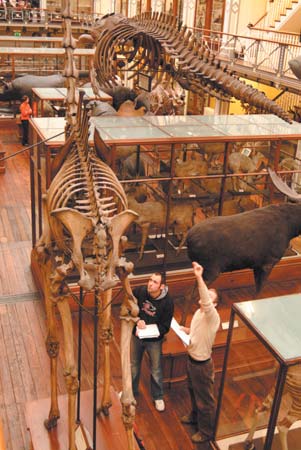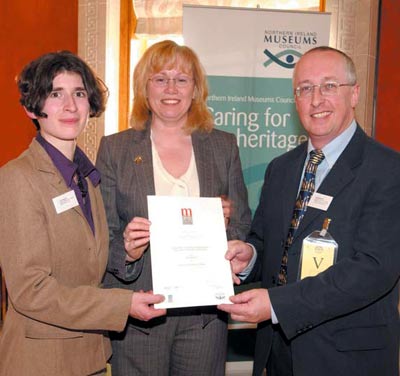| 2005 |

|
YEAR BOOK |
National Museum of Ireland
|
Natural History Museum reaches new audiences
|

The building and its exhibits reflect many aspects of the history and development of the collections. The museum was originally built as an extension to Leinster House, where the Royal Dublin Society was based for much of the nineteenth century. In 1877 ownership of the museum and its collections was transferred to the state. New funding was provided for the building, and new animals were added from an expanding British empire during the great days of exploration. Today, the Natural History Museum is one of four branches of the National Museum of Ireland.
At the foundation of the National Museum of Ireland in 1877 there was a commitment to public education. Not until 2001 however was a full-time education staff in place in the Natural History Museum. The rapid development of this service in recent years has seen a significant improvement in the Museum's commitment to public understanding of the natural sciences.
Guided tours are now available to all interest groups, whether they are a primary school class on a general trip, or an adult education group interested in a specific topic. The 10,000 zoological specimens in the Museum allow for almost any aspect of the science to be addressed. The Extinction Trail is one of a number of activity sheets, which allows visitors of various ages to follow a self-guided tour through the galleries on a particular theme. From the ice age giant deer Megaloceros to the skeleton of a dodo, the trail explains how animals become extinct and what we can do about the endangered animals that are currently fighting for survival in the wild.
Radio is a great medium for images, and during 2005 a total of twenty short radio programmes were broadcast on RT� Radio 1 as part of a series titled Chopped, Pickled and Stuffed Science journalist Mary Mulvihill and producer Dave McHugh probed the nooks and crannies of the museum stores to bring tales from behind the scenes as well as the hidden stories behind popular exhibits. All items in this series are available online at www.rte.ie/radio1/choppedpickledandstuffed
In January 2005 the Museum received the recognition of the Museum of the Year Award for its work in Access and Outreach. This was for a collaboration with University College Dublin as part our joint CoBiD programme. The award-winning project had two strands, involving undergraduate teaching and adult learning.

Dead Zoo: behind the scenes at the Natural History Museum is a course run through the Adult Education Centre at UCD in two independent modules run in autumn and spring. These courses offer hands-on experience in zoological collections (recent and fossil), in collaboration with research staff of the Museum and UCD. Each six-week programme presents the opportunity to become familiar with the diversity of animal life, and how museum curators work to preserve their collections for future generations. We also demonstrate how scientists use our historical collections to tackle today's questions like evolution and global warming.
Why not visit the Museum and avail of these services? There is a new guidebook available which will take you on a 21st century tour around a 19th century building that continues to serve audiences with a thirst for adventure. We like to think that David Livingstone would approve.
Contact: Nigel Monaghan, Keeper,
Natural History Division, National Museum of Ireland,
Merrion Street, Dublin 2;
Tel: +353-1-677 7444;
E-mail: [email protected]